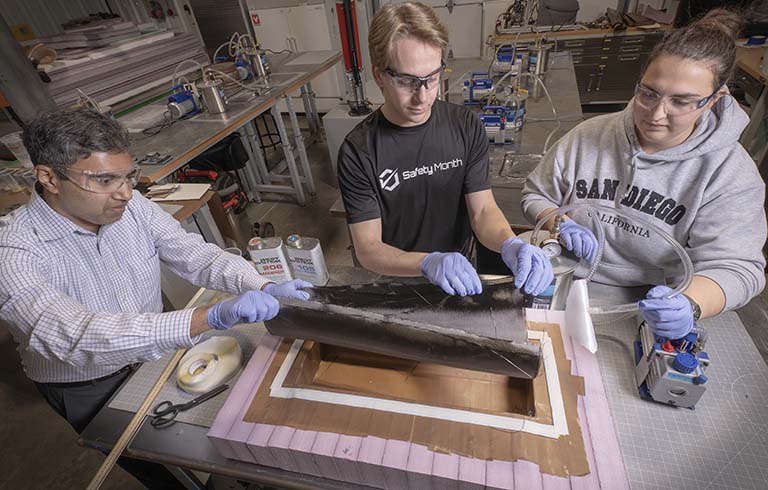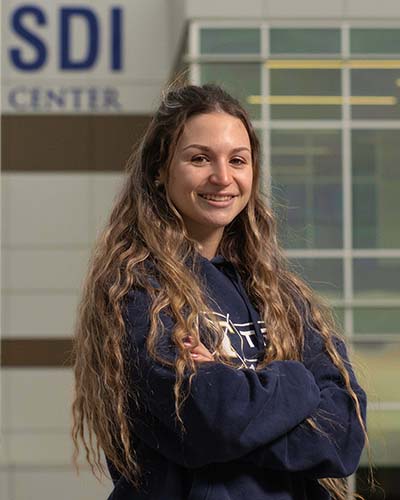
From the ground into the air: Trine students working with advanced resins
Trine University has received a grant from the Indiana Space Grant Consortium (INSGC) to support students conducting advanced aerospace composite research.
February 12, 2025
 Ava Dobbins can’t imagine being anywhere but Trine University.
Ava Dobbins can’t imagine being anywhere but Trine University.
“I’ve always had an interest in mechanical engineering, and being able to incorporate that into my biomedical engineering major was a perfect match,” the Barberton, Ohio, student said.
“I hadn’t seen a program that offered this option during my college search. Additionally, I’m pursuing a biomechanical engineering minor, which has deepened my understanding of how medical devices are regulated and approved.”
Trine offered her the opportunity to play golf at the collegiate level while keeping academics as her top priority. Ava, who has a mechanical engineering concentration within her biomedical engineering major, also appreciated the university’s small class sizes and personal attention from faculty.
“The campus is a perfect size: well-maintained, constantly improving with new buildings and upgrades, and always buzzing with activities, making it easy to get involved and have fun outside of class,” she said.
‘Incredible’ faculty
Ava first heard about Trine through a mail advertisement and was drawn to the school by the biomedical engineering program.
She said the program’s faculty are “incredible,” particularly Maria Gerschutz, Ph.D., the department chair.
“She puts in so much effort to help her students succeed,” Ava commented. “She’s always willing to go the extra mile, and it’s clear she genuinely wants the best for everyone in her class.”
She’s enjoyed many moments during her time at Trine, including cheering on Thunder football and hockey, playing golf and events like Engineering Week, Bingo for Bucks, Thunder Palooza, Fall Fest and Homecoming.
“There is always something going on, and these moments make the college experience even better,” she said.
She is also grateful for hands-on learning experiences that have equipped her for her future career. She has gained mechanical engineering skills such as casting, milling, lathing and welding, while also culturing biological samples in the tissue lab.
“On top of that, I’ve gained experience with programming languages, CAD software and statistical analysis tools that are commonly used in the industry,” she said.
“Beyond the technical side, my classes have taught me how to write professional reports and give presentations — things I know I’ll use in the workforce. Many of our biomedical engineering courses are project-based, so we go through the entire process from design to customer communication to final reports, just like in a real engineering job.”